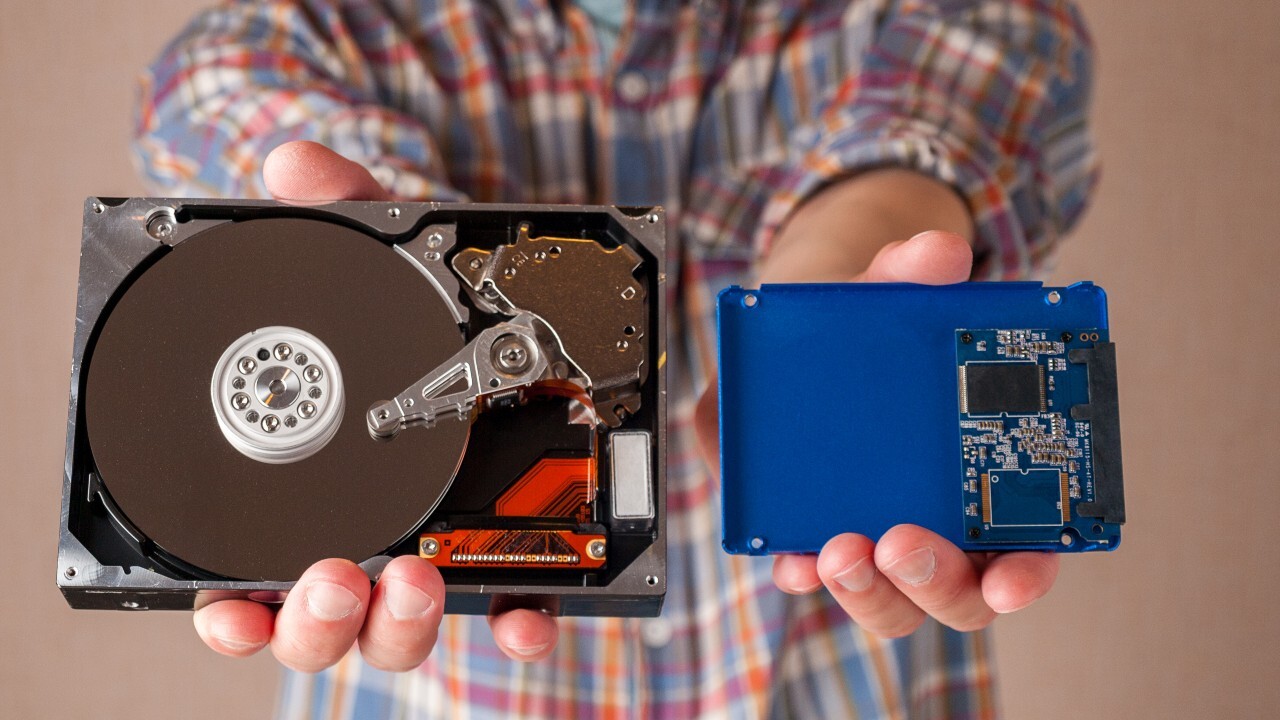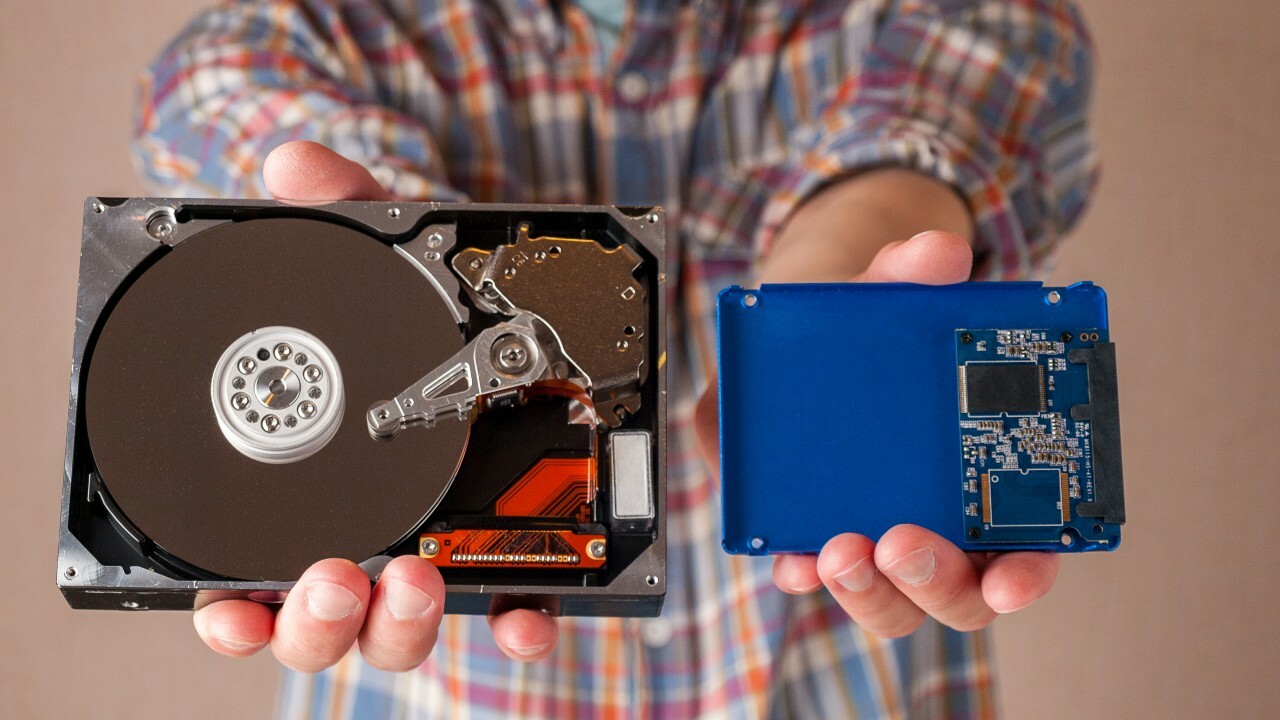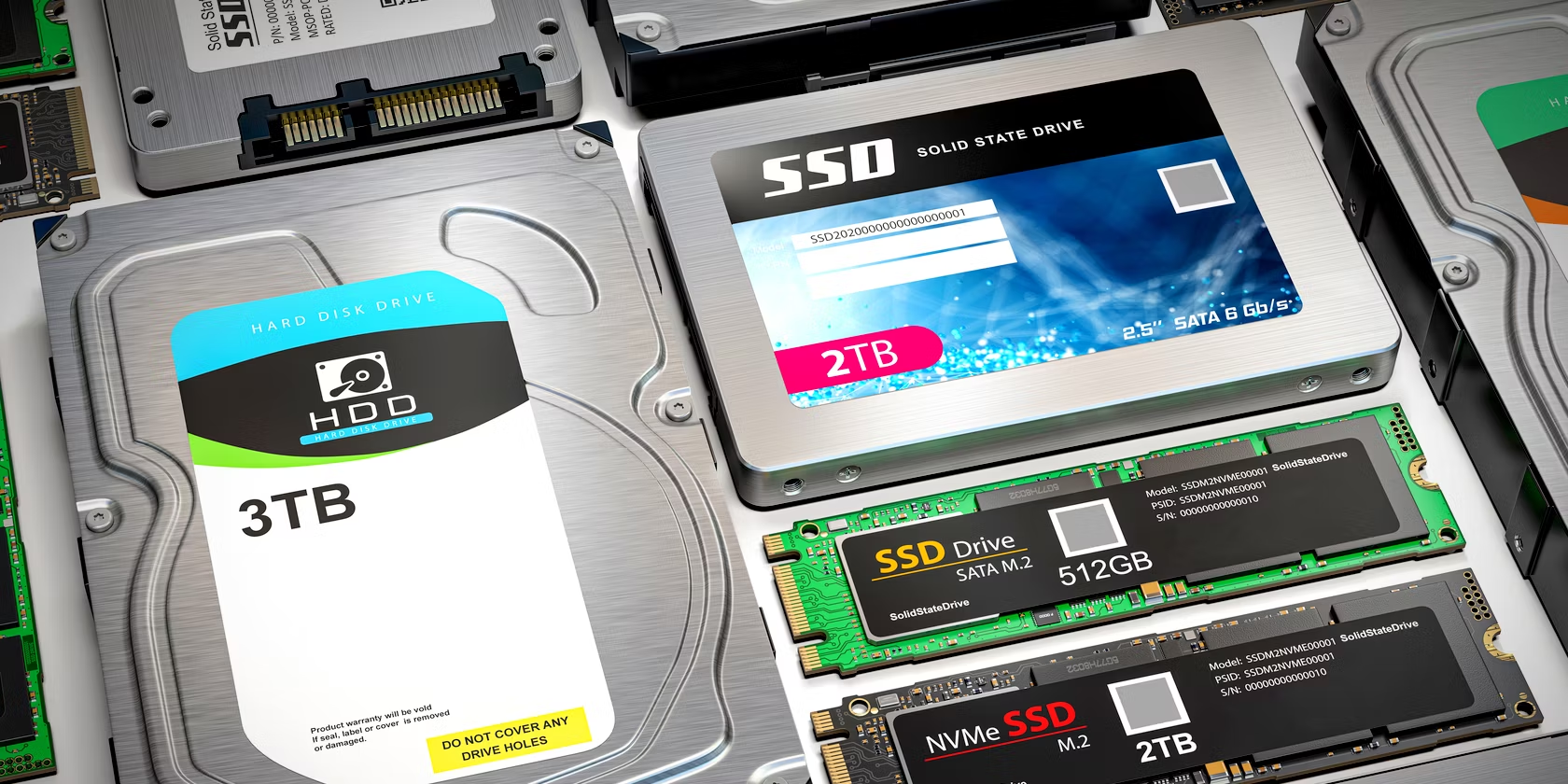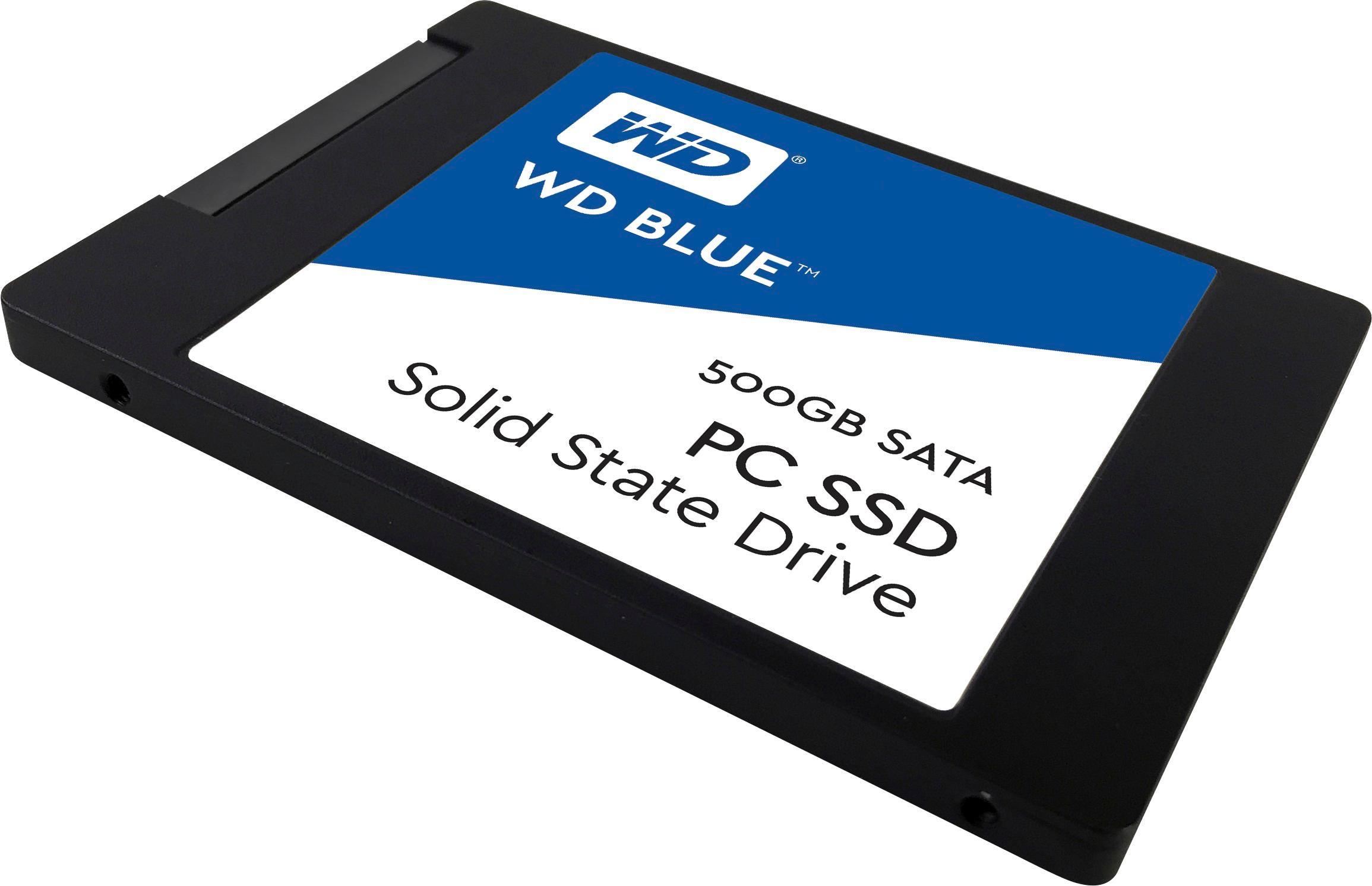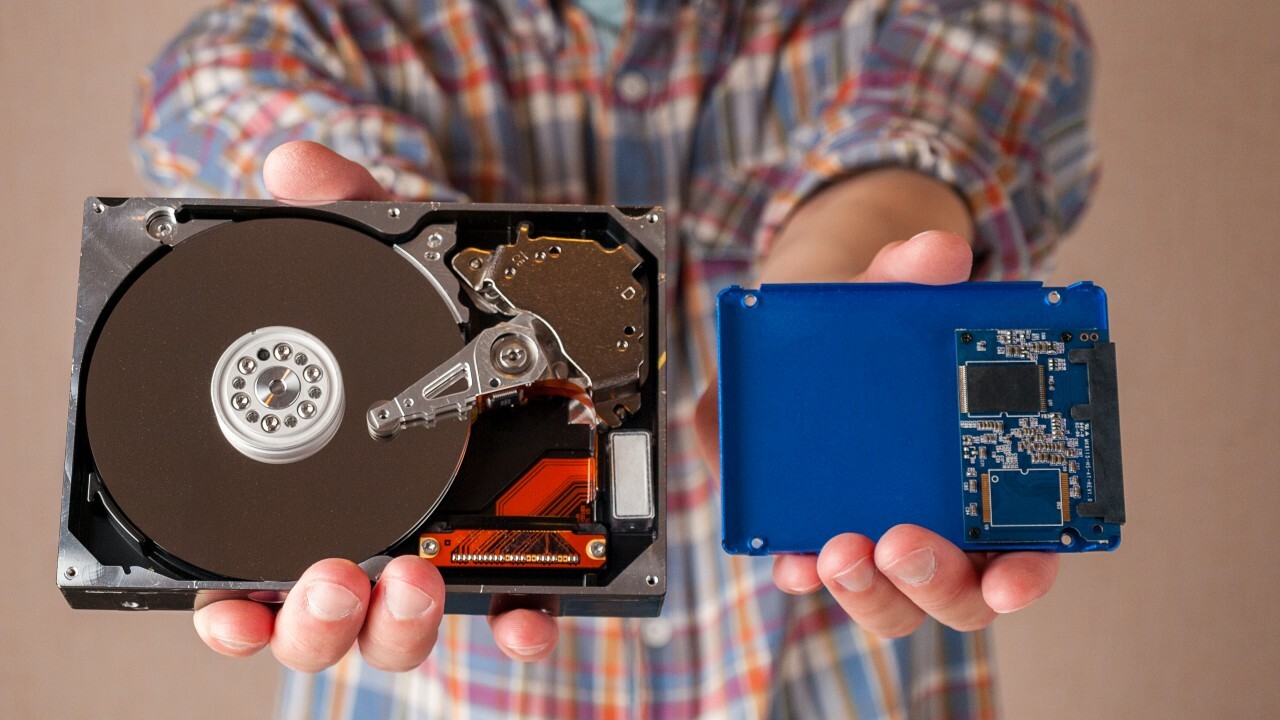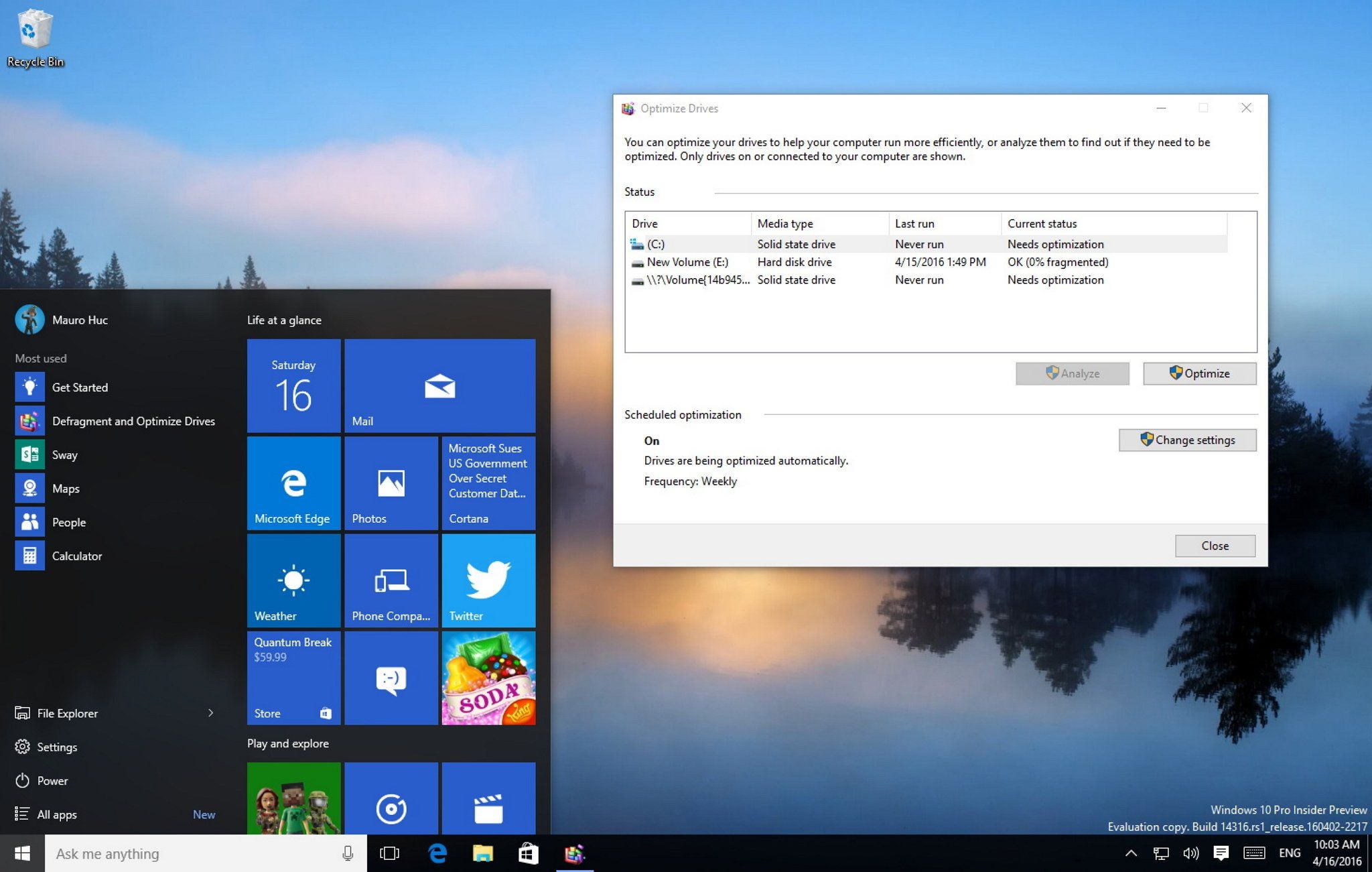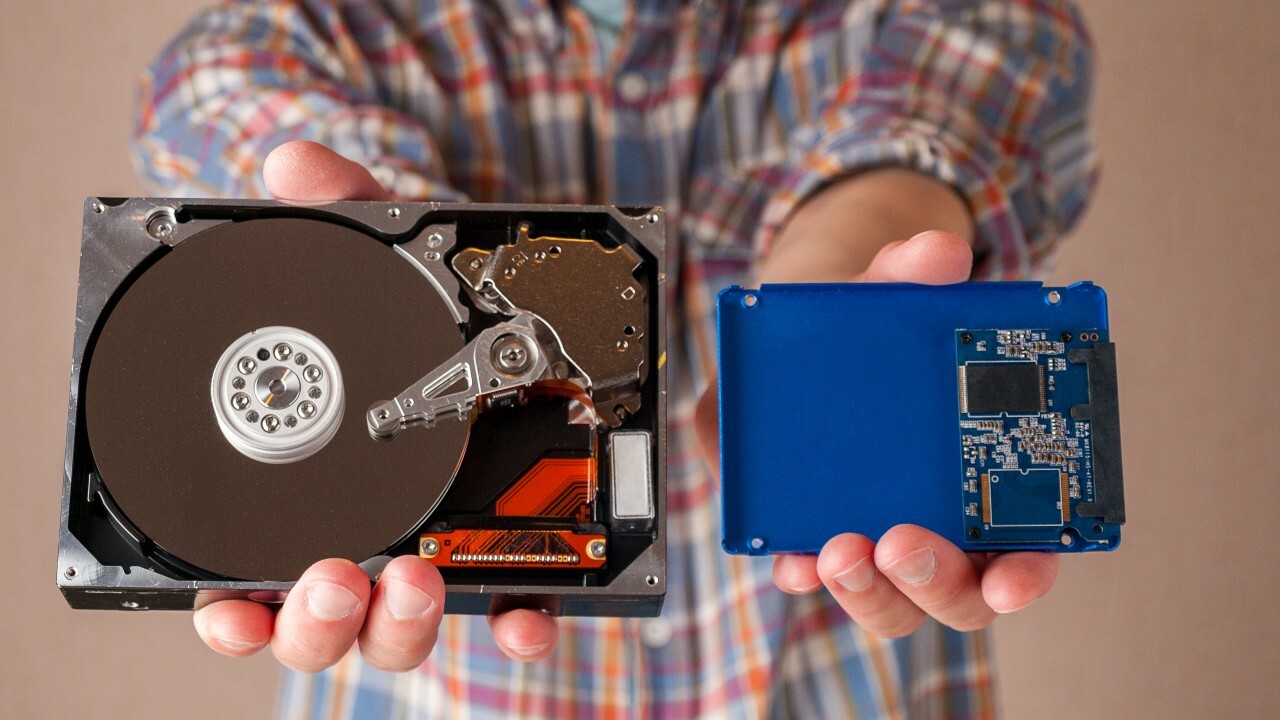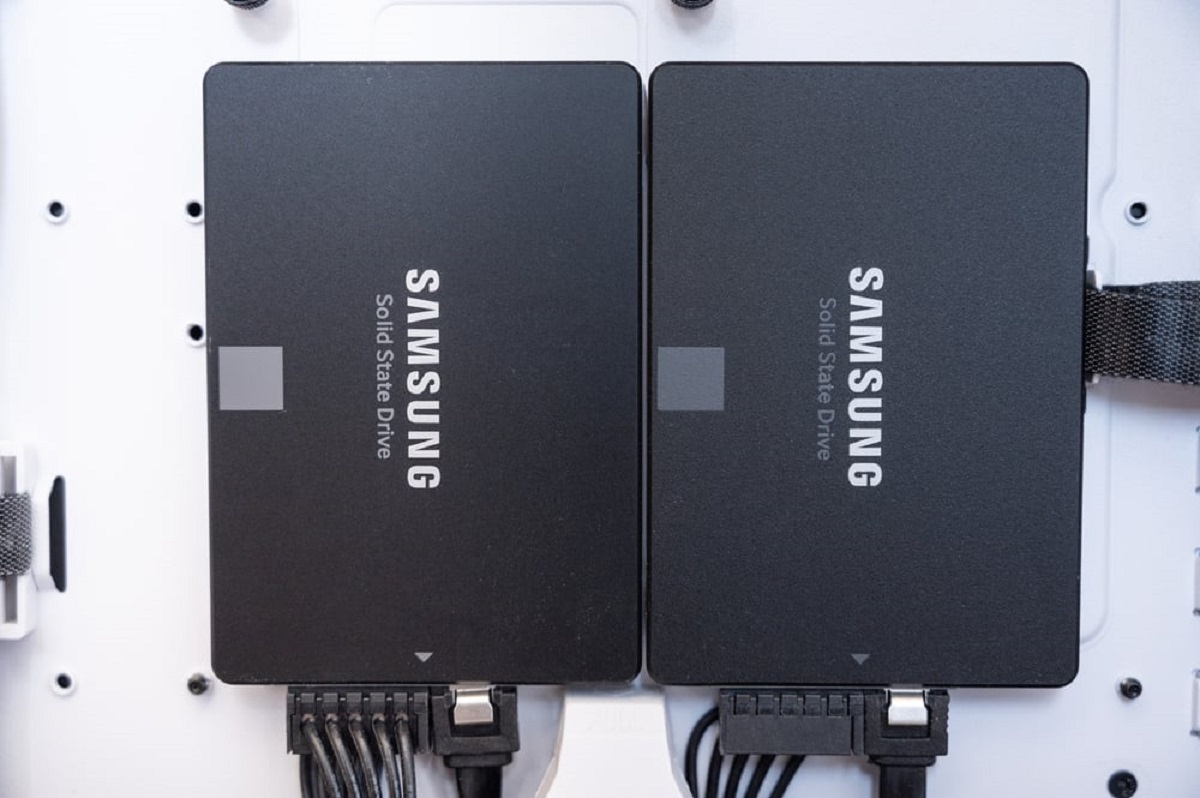Introduction
Defragmentation is a common practice to optimize the performance of traditional hard drives by rearranging fragmented files and data. However, when it comes to Solid State Drives (SSDs), defragmentation is not only unnecessary but can also be detrimental to the drive’s lifespan and overall performance. Understanding the differences between traditional hard drives and SSDs is crucial to grasp why defragmenting an SSD is not recommended.
Traditional hard drives consist of spinning magnetic disks, where data is stored in different sectors. Over time, files on the hard drive become fragmented, meaning they are scattered across different sectors. This fragmentation results in slower read and write speeds, as the read/write heads have to physically move across the disk to access all the fragments of a file. Defragmentation addresses this issue by rearranging the scattered fragments into contiguous blocks, improving access times and overall performance.
On the other hand, SSDs utilize flash memory technology, which stores data electronically in memory chips. Unlike hard drives, SSDs have no moving parts, which allows them to access data much faster. As a result, defragmenting an SSD is unnecessary, as the access times are not impacted by fragmented data. In fact, attempting to defragment an SSD can cause more harm than good.
In this article, we will explore the reasons why you shouldn’t defrag an SSD and how it can negatively affect its lifespan, performance, and the overall well-being of the drive. By understanding the limitations and characteristics of SSDs, we can make informed decisions about how to properly maintain and optimize their performance.
What is defragmentation?
Defragmentation is the process of reorganizing fragmented data on a storage device, such as a traditional hard drive, to improve its efficiency and performance. When files are saved or deleted on a hard drive, they often become fragmented, meaning their data is scattered across different sectors of the disk. This fragmentation can cause slower read and write speeds as the read/write heads of the hard drive have to search for and access the scattered fragments.
Defragmentation works by rearranging the fragmented files and organizing them into contiguous blocks. This reorganization allows the read/write heads to access the data more efficiently, resulting in faster performance and improved overall system responsiveness. The process identifies and relocates the fragments of each file, placing them closer together on the disk to reduce the physical movement required to access the data.
In addition to reorganizing files, defragmentation also consolidates free space on the hard drive. When files are deleted, empty spaces are left between the existing files, known as gaps or free space. These gaps can cause further fragmentation as new files are saved, resulting in decreased performance. Defragmentation merges these gaps and creates larger continuous blocks of free space, which helps reduce future fragmentation.
Traditionally, defragmentation was a manual process that users had to initiate periodically. However, modern operating systems often include automatic defragmentation tools that run in the background, optimizing the hard drive’s performance without user intervention.
While defragmentation is crucial for maintaining the performance of traditional hard drives, it is important to note that this process is not recommended for Solid State Drives (SSDs). Unlike hard drives, SSDs have different characteristics and do not suffer from the same fragmentation issues. In fact, attempting to defrag an SSD can cause more harm than good, as we will explore in the following sections.
How does defragmentation work on traditional hard drives?
Defragmentation on traditional hard drives works by rearranging fragmented files and organizing them into contiguous blocks. When files are saved or deleted on a hard drive, they can become fragmented, meaning their data is scattered across different sectors of the disk. This fragmentation occurs as files are modified, resized, or new files are created.
During the defragmentation process, a specialized software tool or built-in operating system utility analyzes the fragmented files and determines the best way to reorganize them. The tool identifies the scattered fragments of each file and restructures them to create larger sections of contiguous data.
The defragmentation process often involves moving data around on the hard drive. The fragmented files are relocated, and the gaps between the files are consolidated to create larger blocks of free space. By moving the data and reducing fragmentation, the read/write heads of the hard drive have to travel shorter distances to access the necessary information. This results in improved read and write speeds, leading to enhanced overall system performance.
Defragmentation can be performed manually or automatically. In manual defragmentation, users initiate the process by running a defragmentation tool or utility. The tool scans the hard drive, identifies the fragmented files, and reorganizes them accordingly. This process can take a significant amount of time, especially for larger hard drives and heavily fragmented systems.
Automatic defragmentation, on the other hand, is a built-in feature in many modern operating systems. The operating system runs the defragmentation tool on a scheduled basis, typically during periods of low system activity. This allows the system to optimize the hard drive’s performance without any user intervention. Automatic defragmentation is designed to maintain the efficiency of the hard drive in the background, ensuring that file fragmentation does not become a major issue.
While defragmentation is an effective technique for improving the performance of traditional hard drives, it is not recommended for Solid State Drives (SSDs). The reason why defragmentation is not suitable for SSDs will be discussed in the next section.
How does an SSD work?
A Solid State Drive (SSD) works on a fundamentally different principle compared to traditional hard drives. Instead of using spinning disks and read/write heads, SSDs utilize flash memory technology to store and retrieve data more efficiently.
At the heart of an SSD are NAND flash memory chips, which consist of cells that can hold electrical charges. These cells are organized into pages, and pages are further grouped into blocks. When data needs to be written to an SSD, the controller module sends electrical charges to the cells, modifying their state to represent the data being stored. Unlike traditional hard drives, SSDs can directly access specific cells without any physical movement, resulting in lightning-fast data access speeds.
Reading data from an SSD is just as fast as writing. When the computer requests a specific piece of data, the SSD retrieves the necessary information by reading the charge states of the cells directly. This virtually eliminates seek times and reduces latency, making SSDs significantly faster than traditional hard drives.
Another key advantage of SSDs is their durability and resistance to physical shocks. Since there are no moving parts involved, SSDs are less prone to damage from drops or impacts compared to hard drives. This makes SSDs ideal for portable devices such as laptops, where durability is essential.
However, it is important to note that SSDs have a finite lifespan due to the limited number of write cycles that each cell can endure. Each time data is written to a cell, it undergoes a process known as program/erase (P/E) cycles. Over time, as cells go through numerous P/E cycles, their performance and reliability can degrade. To address this issue, SSDs implement wear leveling algorithms, which distribute write operations evenly across all the available cells. This ensures that certain cells are not worn out more quickly than others, maximizing the lifespan of the drive.
Overall, SSDs’ superior performance, durability, and faster access speeds make them an excellent choice for modern computing. However, their unique characteristics necessitate different optimization techniques, and defragmentation is not one of them, as we will explore in the following sections.
Why shouldn’t you defrag an SSD?
When it comes to Solid State Drives (SSDs), defragmentation is not only unnecessary but can actually be detrimental to the drive’s lifespan and overall performance. Here are several reasons why you shouldn’t defrag an SSD:
1. Reduces the lifespan of the SSD: SSDs have a finite number of program/erase (P/E) cycles that each memory cell can endure. Defragmenting an SSD involves writing and rewriting data to different parts of the drive, which contributes to unnecessary wear and tear on the cells. This can effectively reduce the lifespan of the SSD, impacting its longevity and reliability.
2. SSDs have a limited number of write cycles: As mentioned earlier, SSDs have a limited number of P/E cycles that each memory cell can withstand. The continuous writing and rewriting of data during defragmentation can accelerate the consumption of these cycles. This can lead to the premature failure of the SSD, resulting in potential data loss and the need for replacement.
3. No significant performance improvement: Unlike traditional hard drives, SSDs have no physical read/write heads that need to seek and access data, making the issue of fragmentation virtually non-existent. Fragmented files on an SSD do not result in significant performance degradation compared to HDDs, as the access times on an SSD are consistently fast regardless of file fragmentation.
4. SSDs have their own optimization techniques: SSDs employ various internal mechanisms to optimize performance, such as wear leveling and TRIM. Wear leveling distributes write operations evenly across the drive, preventing specific cells from wearing out faster than others. TRIM ensures that deleted data is efficiently managed, allowing the SSD to maintain its performance over time. These built-in optimization techniques are sufficient to ensure the SSD operates optimally without the need for defragmentation.
In summary, defragmenting an SSD is not recommended due to its negative impact on the drive’s lifespan, the limited write cycles of SSDs, the lack of significant performance improvement, and the presence of SSD-specific optimization techniques. It is important to understand and respect the unique characteristics of SSDs to properly maintain and optimize their performance.
Reduces the lifespan of the SSD
One of the primary reasons why you shouldn’t defragment a Solid State Drive (SSD) is that it can significantly reduce the lifespan of the drive. SSDs have a finite number of program/erase (P/E) cycles that each memory cell can endure. These cycles involve writing and erasing data to the cells, causing wear over time.
Defragmentation involves rearranging the data on the SSD by writing and rewriting it to different parts of the drive. Each time data is written to the cells, it contributes to unnecessary wear and tear. While the individual P/E cycles in modern SSDs have significantly improved compared to earlier models, it is still essential to minimize unnecessary writes to maximize the drive’s lifespan.
SSDs implement wear leveling algorithms to distribute write operations evenly across all the available cells. This algorithm ensures that specific cells aren’t worn out more quickly than others. However, defragmentation disrupts this natural distribution and can potentially cause certain cells to undergo more write cycles than others, leading to premature wear and failure.
By avoiding defragmentation, you allow the wear leveling algorithm to function as intended, preserving the lifespan of your SSD. Instead of defragging, focus on other maintenance practices that can help optimize SSD performance, such as managing unnecessary files, running periodic disk cleanup, and updating firmware when available.
It’s worth noting that modern SSDs have ample lifespan for typical usage scenarios. The majority of users won’t experience premature SSD failure by avoiding defragmentation alone. However, considering that SSDs are a long-term investment, it is wise to adopt practices that minimize unnecessary wear and extend their lifespan.
In summary, defragmenting an SSD can lead to increased wear on the drive’s memory cells, reducing its lifespan. By refraining from defragging and instead focusing on other maintenance practices, you can ensure optimal performance and longevity for your SSD.
SSDs have a limited number of write cycles
An important factor to consider when it comes to Solid State Drives (SSDs) is that they have a limited number of program/erase (P/E) cycles that each memory cell can endure. Each P/E cycle involves writing and erasing data to the cells, causing a certain amount of wear. Over time, as more write operations occur, the cells gradually degrade, impacting their performance and reliability.
Unlike traditional hard drives, SSDs are more susceptible to wear due to the physical characteristics of the flash memory cells they utilize. These cells have a finite number of write cycles before they can no longer retain data accurately. This limitation is often referred to as the SSD’s endurance or write endurance.
Defragmentation, which involves writing and rewriting data to different parts of the SSD, contributes to unnecessary write operations that can deplete the drive’s write endurance more rapidly. Each time data is written during defragmentation, it consumes a portion of the SSD’s limited write capacity. Consequently, continually defragmenting an SSD can accelerate its wear and lead to a shortened lifespan.
While modern SSDs have significantly improved in terms of write endurance compared to older models, it remains crucial to minimize unnecessary write operations to extend their lifespan. To address this limitation, SSDs employ wear leveling algorithms, which distribute the write operations across all the available cells evenly. This ensures that no individual cells are subjected to excessive wear compared to others.
By refraining from defragmentation, you allow the wear leveling algorithm to function efficiently by spreading out the writes across the drive. This helps to maintain a more balanced distribution of wear, prolonging the life of the SSD and maximizing its endurance.
It’s important to mention that for typical daily usage, the limited write endurance of an SSD is not likely to be a cause for immediate concern. The endurance of modern SSDs is designed to last for years, even under heavy workloads. However, minimizing unnecessary write operations, including defragmentation, can help maximize the lifespan of the drive and make the most of its available write endurance.
In summary, SSDs have a limited number of write cycles or endurance, and defragmenting an SSD can contribute to unnecessary write operations, potentially accelerating wear on the drive. By avoiding defragmentation and adopting practices that minimize write operations, you can help ensure the longevity and optimal performance of your SSD.
No significant performance improvement
One of the key reasons why defragmenting a Solid State Drive (SSD) is not recommended is that it does not lead to significant performance improvements. Unlike traditional hard drives, SSDs do not suffer from the same physical limitations that result in performance degradation due to fragmentation.
Fragmentation occurs when files are scattered across different sectors on a storage device, leading to increased seek times for the read/write heads. However, SSDs do not rely on mechanical components and moving read/write heads like hard drives do. Instead, they use flash memory technology to store and retrieve data electronically, allowing for near-instantaneous access regardless of file fragmentation.
SSDs excel at random access, which means they can access data from any location on the drive with similar speed. The lack of mechanical parts and the ability to simultaneously read from and write to multiple memory cells make SSDs inherently fast and efficient. As a result, the performance impact of fragmented files on an SSD is negligible compared to traditional hard drives.
Additionally, modern operating systems and SSD controllers employ various optimization techniques to mitigate the effects of fragmentation on performance. These techniques include wear leveling, TRIM, and garbage collection, which help maintain the overall performance of the SSD over time. The SSD’s firmware and controller work in conjunction with the operating system to ensure that data is stored and retrieved in the most efficient manner, minimizing the need for manual defragmentation.
It’s also worth noting that defragmenting an SSD involves multiple write and erase operations, which contribute to unnecessary wear on the SSD’s memory cells. Since SSDs have a limited number of write cycles before the cells degrade, it is advisable to avoid any unnecessary write operations, including defragmentation, to extend the lifespan of the drive.
In summary, defragmenting an SSD does not provide significant performance improvement due to the nature of SSD technology and the optimization techniques implemented by modern operating systems. SSDs excel at random access and are not affected by file fragmentation in the same way as traditional hard drives. Instead of focusing on defragmentation, it is more beneficial to allow the SSD’s built-in optimization techniques and wear leveling algorithms to operate naturally, preserving the drive’s performance and longevity.
SSDs have their own optimization techniques
One of the reasons why defragmentation is not recommended for Solid State Drives (SSDs) is that SSDs employ their own optimization techniques to ensure optimal performance and longevity. These techniques are specifically designed to address the unique characteristics of SSDs and eliminate the need for manual defragmentation.
1. Wear Leveling: SSDs utilize wear leveling algorithms to distribute write operations evenly across all the available memory cells. This prevents certain cells from receiving more writes compared to others, spreading out the wear across the drive. By balancing the wear, wear leveling helps to maximize the lifespan of the SSD and maintain its performance over time.
2. TRIM: TRIM is an essential aspect of SSD optimization. When a file is deleted, the operating system sends a TRIM command to the SSD, signaling that the space previously occupied by the file is no longer in use. This allows the SSD to mark those blocks as available for future write operations, effectively optimizing performance. By promptly reclaiming unused space, TRIM helps prevent performance degradation and unnecessary write operations.
3. Garbage Collection: SSDs employ garbage collection processes to reclaim and consolidate blocks that are no longer in use. The garbage collection mechanism frees up space by consolidating partially filled blocks and minimizing fragmentation within the drive. Garbage collection helps maintain optimal performance levels by preventing unnecessary write amplification and ensuring efficient use of available memory cells.
4. Over-Provisioning: SSDs typically have more memory cells than the specified capacity to allow for over-provisioning. Over-provisioning reserves a percentage of the capacity to be used by the SSD’s controller for wear leveling, garbage collection, error correction, and other internal functions. This extra space enhances the SSD’s overall performance and helps prolong its lifespan.
These built-in optimization techniques are implemented at the hardware level and integrated with the SSD’s firmware and controller. They work seamlessly with the operating system to ensure the SSD operates optimally without the need for manual intervention.
Instead of defragmentation, it is recommended to periodically update the firmware of the SSD and keep the operating system up to date. This ensures that the SSD benefits from the latest optimizations and enhancements provided by the manufacturer.
In summary, SSDs have their own set of optimization techniques, including wear leveling, TRIM, garbage collection, and over-provisioning. These techniques are specifically designed to address the unique characteristics of SSDs and eliminate the need for manual defragmentation. By allowing these built-in optimizations to operate naturally, you can maximize the performance, longevity, and overall well-being of your SSD.
Conclusion
In conclusion, defragmenting a Solid State Drive (SSD) is unnecessary and can even be detrimental to the drive’s lifespan and overall performance. Unlike traditional hard drives, SSDs do not suffer from the same fragmentation issues due to their flash memory technology and lack of mechanical moving parts.
SSDs have a limited number of program/erase (P/E) cycles that each memory cell can endure. Defragmenting an SSD involves unnecessary write operations that can accelerate wear and reduce the drive’s lifespan. SSDs employ wear leveling, TRIM, and garbage collection techniques to optimize their performance and ensure an even distribution of write operations across all the available memory cells.
Furthermore, SSDs exhibit excellent random access speeds and do not experience significant performance degradation due to fragmented files. The lack of mechanical components allows SSDs to access data virtually instantaneously, regardless of file fragmentation. Operating systems and SSD controllers implement optimization techniques to further enhance performance and eliminate the need for manual defragmentation.
To maintain and optimize the performance of an SSD, it is recommended to focus on other maintenance practices like managing unnecessary files, running periodic disk cleanup, updating firmware, and keeping the operating system up to date. These practices ensure the SSD operates at its peak performance without undergoing the unnecessary wear caused by defragmentation.
By understanding the characteristics of SSDs and adopting the appropriate maintenance strategies, users can prolong the lifespan, maximize performance, and make the most out of their investment in SSD technology.









